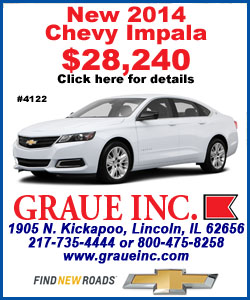|
 This adds to Hyundai's challenge in making significant market share
gains in the United States, where it has a smaller presence in the
SUV segment than its rivals. A Hyundai executive said this week at
the Detroit auto show that the company's share of the U.S. market,
its second biggest globally, will likely improve to 4.7 percent this
year from 4.6 percent in 2013. This adds to Hyundai's challenge in making significant market share
gains in the United States, where it has a smaller presence in the
SUV segment than its rivals. A Hyundai executive said this week at
the Detroit auto show that the company's share of the U.S. market,
its second biggest globally, will likely improve to 4.7 percent this
year from 4.6 percent in 2013.
It could make it even tougher for Hyundai to overcome its recent
slide in market share, though an executive said this week at the
Detroit auto show that the company's U.S. market share will likely
improve to 4.7 percent this year from 4.6 percent in 2013.
Excitement over the promise of a market for small "subcompact"
crossover utility vehicles (CUVs) is mounting in the United States.
General Motors Co <GM.N> said it expects sales of its own Buick
Encore subcompact CUV and other mini SUV-like vehicles by other
automakers, including those offered by luxury brands, to reach
400,000 vehicles a year in 2018.
Roger McCormack, U.S. marketing director for GM's Buick brand,
believes demand from down-sizing empty nesters and urban youth is
going to drive demand for mini CUVs.
"I am really excited about the potential," McCormack told Reuters in
an interview this week at the Detroit auto show. "The idea is ... I
can get that functionality (of crossovers) but I don't need to do it
in a bigger vehicle necessarily. Now, I think it fits a lot of
people's lifestyles very nicely."

Yet, according to four individuals close to the company, Hyundai
won't likely have an answer for that expected growth in the
foreseeable future.
"It looks more and more like Hyundai is going to completely miss the
boat with mini crossovers at least for the foreseeable future,"
noted one of the knowledgeable individuals who are privy to
Hyundai's global product plans but asked not to be identified. He
said it isn't that Hyundai isn't searching for a solution, but there
is "no answer so far."
Dave Zuchowski, the recently appointed U.S. chief executive of
Hyundai, said the automaker plans to boost its crossover and SUV
business as part of a mid-term effort to reach a market share of 5
percent.
But Hyundai has no immediate plans, he noted, to come up with a
model to compete in the subcompact CUV market. Instead, it plans to
focus its sales and marketing effort on bigger CUVs that it already
markets, namely the Tucson compact and the Santa Fe midsize SUVs.
Hyundai is "definitely looking at" the subcompact crossover market,
Zuchowski told Reuters on Monday at the show. "There are a lot of
activities going on there right now. We have no immediate plans,
nothing approved in the product cycle. But it is the segment that
interests us."
Hyundai's mini crossover challenge compounds a host of issues it's
already confronted with in the United States, including heightening
competition from Japanese automakers now armed with the cheaper yen,
as well as a lack of manufacturing capacity that the company's U.S.
sales team has cited in recent months as an obstacle to growing
sales. Zuchowski said the capacity issue was being resolved, albeit
incrementally as the company has no current plan to build another
U.S. factory.
LOST MOMENTUM
Hyundai also has been faced with the relative lack of penetration in
the overall U.S. crossover and SUV market. According to industry
research firm Edmunds.com, only 18 percent of the Hyundai brand's
overall U.S. volume came from crossover and SUV sales as of
November. That compares to Chevrolet's 27 percent and Honda's
<7267.T> 33 percent.
Hyundai was the only major automaker which increased U.S. sales
during the 2009 economic crisis, but it lost momentum last year with
its sales growing 3 percent when the overall market grew 8 percent.
That cut Hyundai's U.S. market share to 4.6 percent last year,
compared with 4.9 percent in 2012, and its record-high of 5.1
percent in 2011.
[to top of second column] |

Although Hyundai has a subcompact crossover in its global product
lineup called the HB20X, which is manufactured and sold in Brazil,
it lacks the proper level of sophistication and powertrain to be
marketed as a competitive U.S. model, according to one of the four
individuals close to the company.
The company could redesign the ix20, a hatchback it sells in Europe,
and create a CUV variant for sale in the United States, but
"nothing's been confirmed as yet," said one source.
Another problem: Hyundai doesn't want to create a product that might
cannibalize sales of its existing SUVs like the Tucson, as well as
from affiliated brand Kia Motors' <000270.KS> Soul, a boxy mini van
that generated U.S. sales of 118,000 vehicles last year, up 2
percent from 2012.
"Hyundai doesn't want to spoil and take away from the Tucson and the
Kia Soul's success," one of the individuals with knowledge of the
issue said. That is "not an easy issue to solve," he said.
As Hyundai continues to look for an appropriate subcompact crossover
for the U.S. market, the smallest SUV or crossover vehicle the
Hyundai brand could try to woo U.S. consumers with is the Tucson,
which starts at $21,450, compared with the Nissan <7201.T> Juke, a
key subcompact crossover that sells for as little as $18,990.
No participation in the subcompact crossover segment, a "hot little
market segment" as described by Michigan-based analyst for research
firm IHS Automotive Masaki Taketani, means a big opportunity lost
for Hyundai.
Mainstream vehicles competing in the category are limited in number
today, with competition more or less boiling down to two subcompact
CUVs: the Juke and the Encore.
But other automakers are also gearing up efforts in part because of
the mini success Nissan pulled off with the Juke.
Nissan sold 8,639 Juke cars in the United States in 2010, when it
was launched in that market and the Japanese carmaker sold about
38,157 of them last year, up 5 percent from 2012. To join in the
action, GM launched the Encore at the start of 2013, selling 31,956
last year.
Among those contemplating entering the subcompact crossover market,
according to IHS, are Mazda <7261.T>, Chrysler <FIA.MI>, and Honda.
Taketani said GM is also seen likely to launch derivatives of the
Encore for Chevrolet and GMC, while Honda officials have said the
company plans to start selling as early as by the end of this year a
subcompact crossover called Vezel based on the Fit.

The mainstream subcompact crossover segment, whose sales totaled
about 72,000 vehicles last year, should nearly quadruple to 280,000
vehicles by 2020, while additional demand for luxury subcompact
crossover cars, such as the BMW <BMWG.DE> X1, is expected to total
about 164,000 by 2020, up from 50,000 in 2013, according to IHS.
(Reporting by Hyunjoo Jin and Norihiko
Shirouzu in Detroit; editing by Paul Simao)
[© 2014 Thomson Reuters. All rights
reserved.] Copyright 2014 Reuters. All rights reserved. This material may not be published,
broadcast, rewritten or redistributed. |